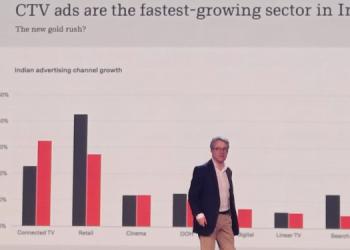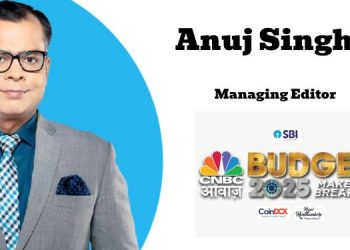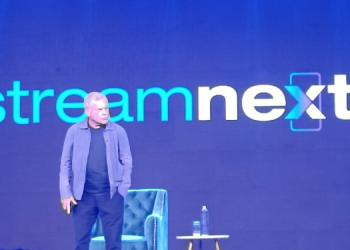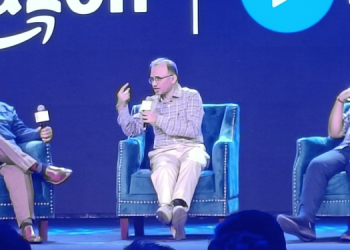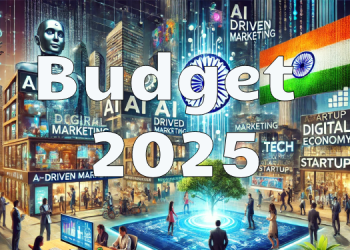Medianews4u’s Bengaluru edition of Leaderspeak 2019 saw industry veteran Partho Dasgupta, CEO BARC India deliver an insightful session on what India is watching. Some of the facts completely startled the audience. What also was reinforced by this session was that Television in India is not going anywhere and is definitely here to stay.
Dasgupta used Medianews4u’s Leaderspeak as a forum to discuss some important points about the impact of the New Tariff Order.
Read on and also watch Partho Dasgupta talk, just below the article.
Beginning his address, Dasgupta said, “The consumer of today is what I am going to be talking about. India is going through a video explosion, I’m saying video and specifically referring to TV, OTT and all that kind of mediums, but I’m just saying it’s video. Ultimately, we all are watching video.”
On India’s video eco-system, Dasgupta said, “India has about 800 + licensed TV channels which are active. Five to seven SVOD OTT platforms, and a huge number of AVOD platforms close to 25 to 27, which are all over the place. And all social media apps, that’s the kind of video ecosystem that we’re talking about.”
He informed that India spends a total of 190 minutes on watching videos across mediums.
On the impact of the New Tariff Order, Dasgupta said, “India was watching about 15 to 16 channels per day, which has come down to about 12 to 13 for about 2 to 3 hours a day after NTO.
Speaking about the various platform explosions, Dasgupta said, “In about 2012, which is not too far from now, there were about nine platforms. As we speak today, in 2019 there are about 30 plus platforms, TikTok is a big thing that has started happening and I’m sure you’re able to see many such things which is going around on WhatsApp and all.”
“But at the end of the day93% of all video content,even today, the consumption happens on a standard TV!”
India loves Entertainment
Speaking about good old linear TV, Dasgupta said, “In 2015, if the number was about 640 billion man minutes a week In 2019, it has become 940 billion man minutes. So these four years are roughly a 47% jump. That’s the kind of change the Indian television ecosystem is going through.”
Asking an important question from the audience, Dasgupta said, “What is India watching? Obviously, India loves a lot of entertainment. But if you really see there are a few small tricks, what really works are things like maha episodes which sell drama. So maha episodes gives you a great number. I mean, we have kind of empirically calculated this jail tracks in any of the GEC shows give you a lift, a wedding gives you a lift and similarly, kidnapping gives you a good lift.
Talking about News, Dasgupta said, “The same thing happens in news, which is also about drama, whether it is a death of a much loved superstar, or demonetization, or somebody’s going to jail or the entire Ram Rahim incident, so all of this gives a tremendous boost in numbers.”
“Sports is no different, Indians love Drama” said Dasgupta.
Continuing he said, “During the last ICC Cricket World Cup, England vs. New Zealand final match. 62% of total TV was be watched on the World Cup match.And then the moment the super over started,it just slumped down. So all this is about drama.”
“52% of TV in India is about GECs. So the broad pie that is there around the country, roughly 52% is soaps on GECs.”
Elaborating on The FIFA World Cup which was an international event, Dasgupta said, “Look at the number of people who watched FIFA was just about 187 million people and The IPL 2018 final, which is a one country kind of a sport was watched by about 160 million viewers. We love watching TV. There is no second guesses about that. The 2019 edition of the IPL saw 462 million viewers between both TV and OOH.”
“Commander Abhinandan’s return had a huge number, 146 million viewers actually watched him return. In fact, because it was getting too long, we were waiting for him to come back. That Day was a second highest viewership of news, which about 400 million viewers watched it. The next bigger number is the general election day.”
Change in TV Landscape
Talking about the changing TV landscape, Dasgupta said, “I think one of the first things that we are seeing is unlike the west or unlike any other developed countries, our households are not buying the second or third period television set. India is skipping the second TV generation completely, India will have typically one family viewing TV and all the individual consumptions will move on to their handsets or the devices. So, that is a very clear thing that we are seeing.”
“98% of India is still a single TV household.”
New Tariff Order
Talking about the all-important New Tariff Order, Dasgupta said, “The New Tariff order has introduced new learnings and I am using this forum to talk about it because we get this question very regularly.”
“We have seen a lot has changed from what they used to be earlier, because the way it is structured on the basis of economics of choice, you can choose what you want to see and hence it is not about you having access to everything, but here the choice is with you. You will not have access to a certain channel that you have not subscribed to. So, the interesting thing here is that 59% of the population used to sample up to 30 channels as compared to 76%. Now the number of channels that you are sampling is changing, similarly 97% of the population samples up to 50 channels in a week as compared to 91% earlier.”
“Earlier the standard thing was when reach goes up typically the average time spent would come down, right now in both reach and time spent can go up you know for a particular channel only because people have chosen one or two channels in that genre.”
Watch the entire speech here:


